
HOFFMAN’S TWO-TOED SLOTH
Two-toed sloths eat, sleep, mate, and even give birth suspended from tree limbs.
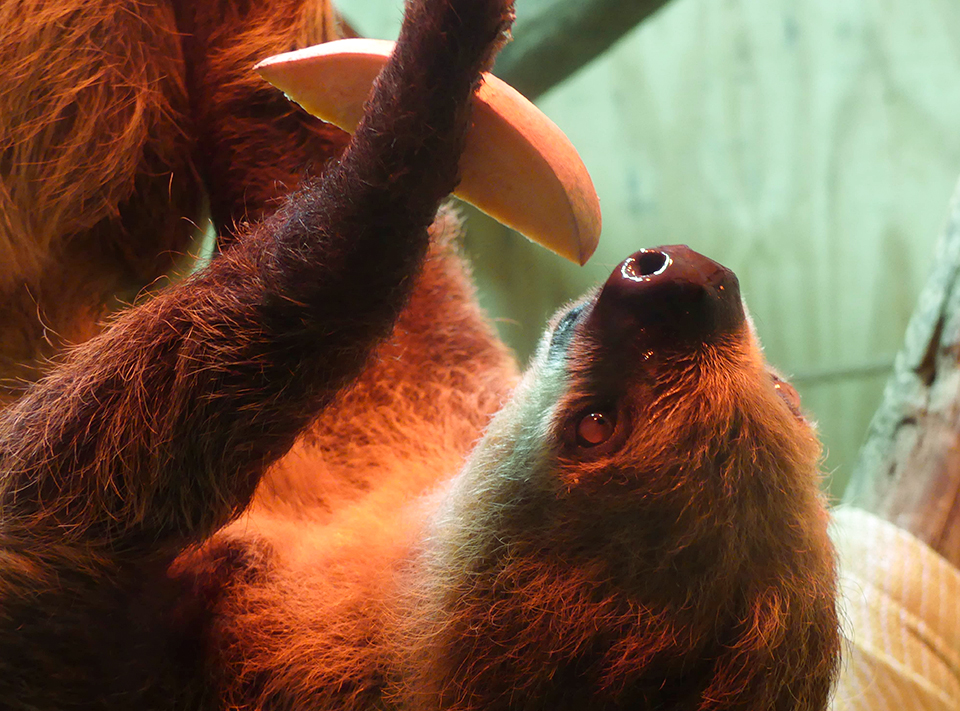
PROFILE
Sue and Sid were confiscated pets and came to us in the spring of 2022. Sid is lighter in color and is the more “active” one of the two. Sue is darker in color with a light mask around her eyes. They both enjoy grapes and bananas.
OVERVIEW
CONSERVATION STATUS
Least Concern
AVERAGE SIZE
Compared to a 6′ Man
AVERAGE WEIGHT
9 – 17 lbs
AVERAGE LIFESPAN
12 Years (wild)
31 Years (captivity)
DIET
Herbivore
REGIONS
Central and South America
Two-toed sloths are native to South America but can be found in Central America as well. They live mainly in the treetops of rainforests as well as lowland forests. They maintain a range of about 10 acres in the wild. Learn more about sloths … book a Sloth Encounter!
APPEARANCE
Adult two-toed sloths weigh between 9 and 17 pounds. They have short necks and long limbs with two 3 – 4 inch long curved claws on each. They have a snub, black nose. As nocturnal animals (sleeping up to 15 hours per day) they have large brown eyes. Their fur is made up of a short undercoat and a long overcoat of coarser hairs. The topcoat strands of hair have grooves upon which algae commonly grows due to the moist tropical climate in which they live coupled with the sloth’s sedentary nature. The green tint from the algae helps to camouflage them in the treetops. In contrast to most mammals, a sloth’s fur grows from its stomach toward its back, which in a way makes perfect sense as they spend most of their time in an upside-down prone position while hanging from branches.
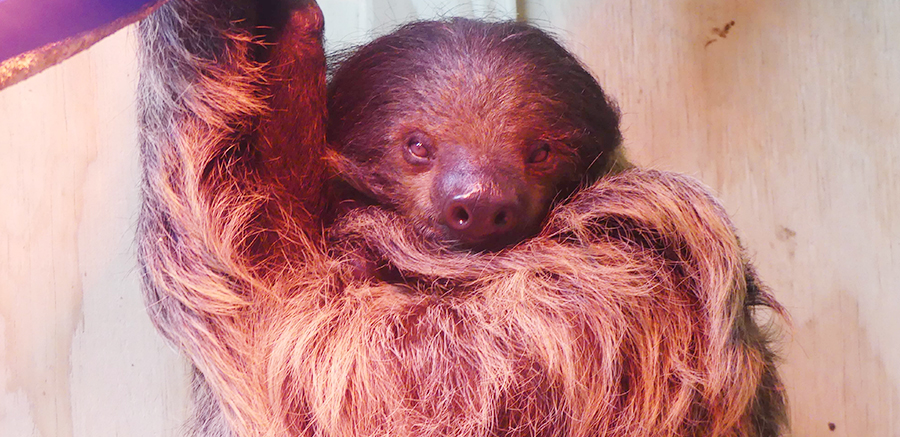
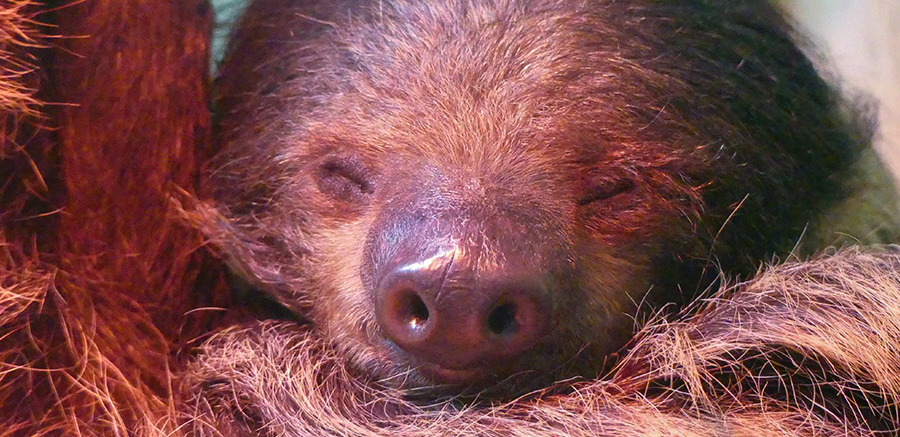
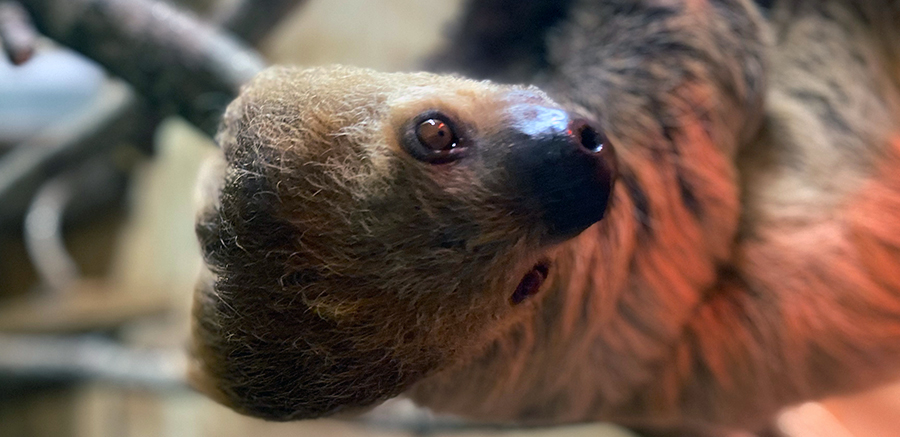
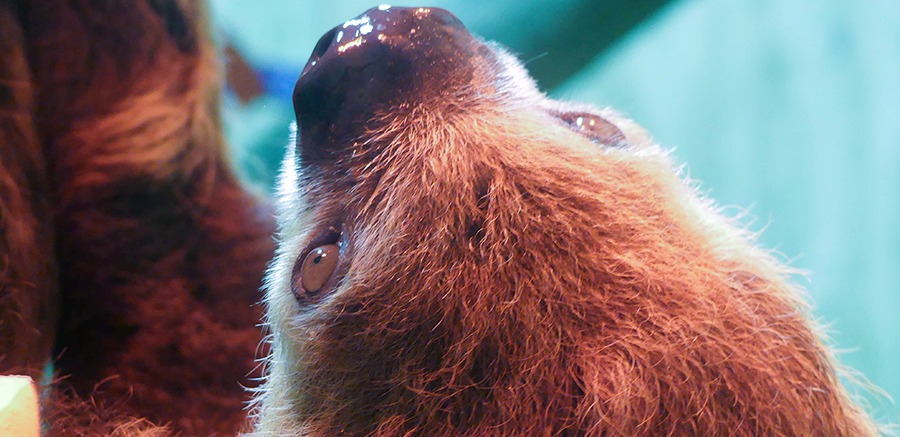
CHARACTERISTICS
A two-toed sloth is typically very docile but will use its large claws to defend itself. Mostly silent, they will moan or hiss when feeling threatened. As their teeth continuously grow, they chew on plant material to keep them from getting too long. They get their hydration from the leaves and fruits they consume. They are somewhat solitary animals. They breed once per year, producing just one “pup” that will cling to its mother for about 5 weeks until it is strong enough to maneuver through the trees on its own.
Sloths have been reported to survive dramatic injuries. Wounds, even deep bites, rarely become infected and seem to heal entirely in less than a month.


